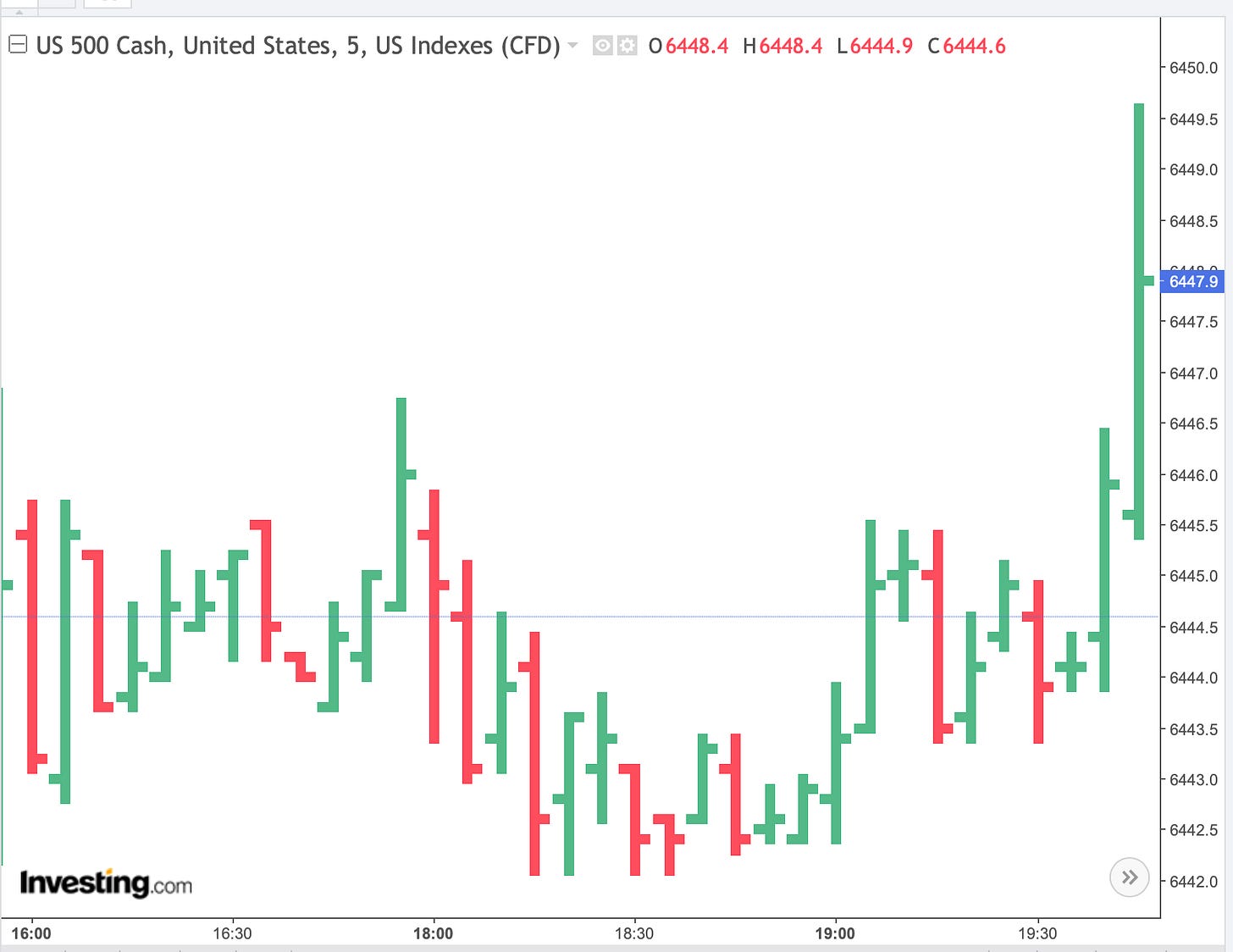When the Global Clock Strikes — ES, Nikkei, and Bonds Move as One
At 7:47 PM EST, the S&P 500 futures printed a decisive green candle — a clean, vertical acceleration off a dead-tape base — just as our internal Global Clock model predicted. Within seconds, the Nikkei and the bond market echoed the shift, proving again that market tempo is neither random nor isolated.
For nearly 20 minutes, ES drifted in a low-volatility crawl — classic dead tape. Then, in under 60 seconds, we went from an orderly auction to a muti-point vertical burst, clearing resting offers and triggering a volume spike exceeding hundreds contracts per minute.
Velocity: The rate of change jumped from ~0.25 points/min to over 2 points/min.
Cross-Asset Confirmation
As ES burst:
Nikkei 225 Futures: Registered a correlated uptick within 30 seconds, signaling cross-Pacific risk-on flow. (Nikkei still closed till 8pm)
U.S. Bonds: Printed micro sell-pressure, consistent with equity strength and mild duration shedding.
This isn’t random sympathy — it’s global repricing in response to a single market-tempo trigger.
The Global Market Clock
The move aligns with the thesis that the S&P 500 acts as the master clock for global equities. When its second hand ticks sharply, every other market — from Tokyo to Chicago — reads the time.
We’ve spent years conditioning this tempo:
Velocity spikes that turn minutes into seconds.
Acceleration signatures that predate the burst.
Dead tape setups that store energy until the clock “strikes.”
We are operating at the scale of the global market’s heartbeat. The trade isn’t just about points on ES — it’s about the synchronized revaluation of risk worldwide.



